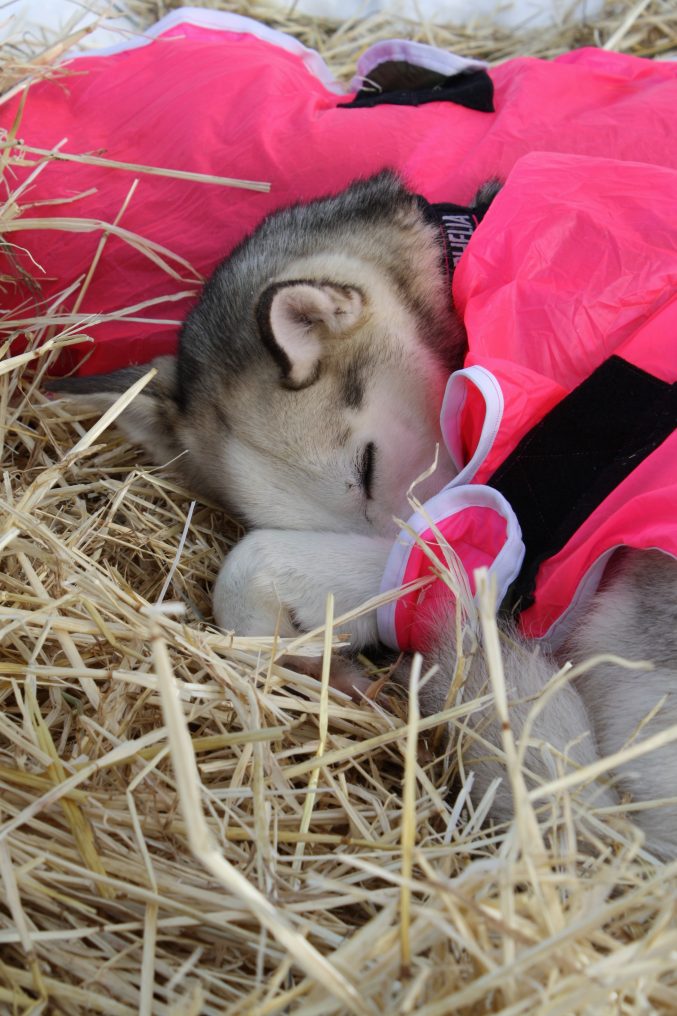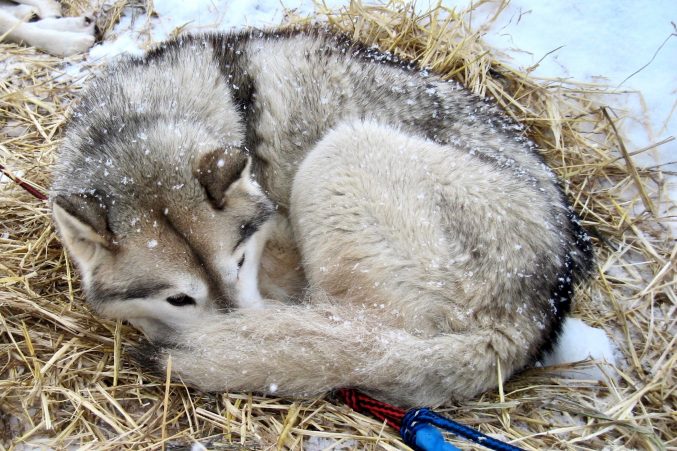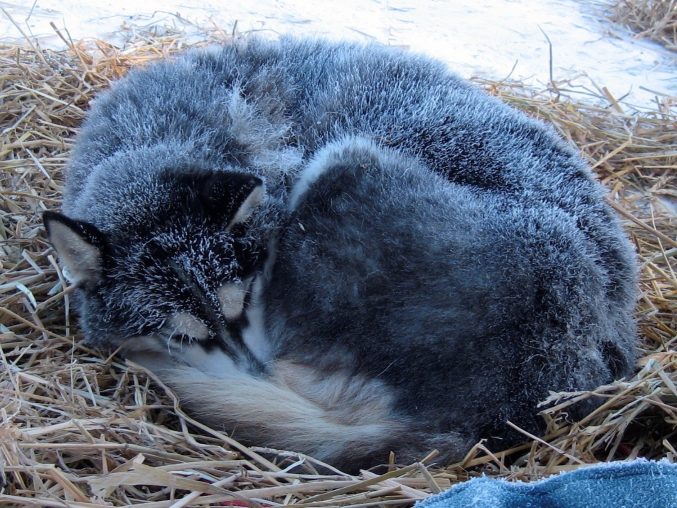Tails on the Trail- Adaptations Tails!

Photo Credits: Terrie Hanke
It is always great to see a dog wagging its tail. Dogs’ tails serve so many functions. They help in communication and balance. The position and wag of the tail can tell us if they are happy or scared, excited, ready to play, or prepared to work. The tail also helps with counterbalance. The tails help the dog like a pole helps a tightrope walker, keeping the dog in perfect balance while running, walking, and moving along narrow surfaces. Tails even serve as rudders for water dog breeds. These breeds need a strong tail to help them turn and move through the water.

Photo Credits: Terrie Hanke
Along the Iditarod Trail, the big bushy tails of the sled dogs come in handy. These tails are not just for show, they have an essential function, and the fluffier, the better. When sled dogs are sleeping out along the trail, or even in the comfort of their own homes, you will see them curled up with their tails snug up against their noses with their feet tucked in. The bushy tail traps the warm air that the dogs breathe out, in turn warming the air that the dog breathes in. The warm air inhaled helps to keep their bodies as well as keep their paws warm in the cold.

Photo Credits: Terrie Hanke
Teachers: When I think about the adaptations of the sled dogs so far, it is easy to compare the resources we use to achieve the same goal the dogs do with their adaptations.
Tails- neck gaiters/ scarves
Fur- winter jackets/ parkas/ snow pants
Tongues- Sweat glands
But we can look much deeper and compare the anatomy of humans vs. canines. Here is a lesson that looks at comparing skeletal systems.


